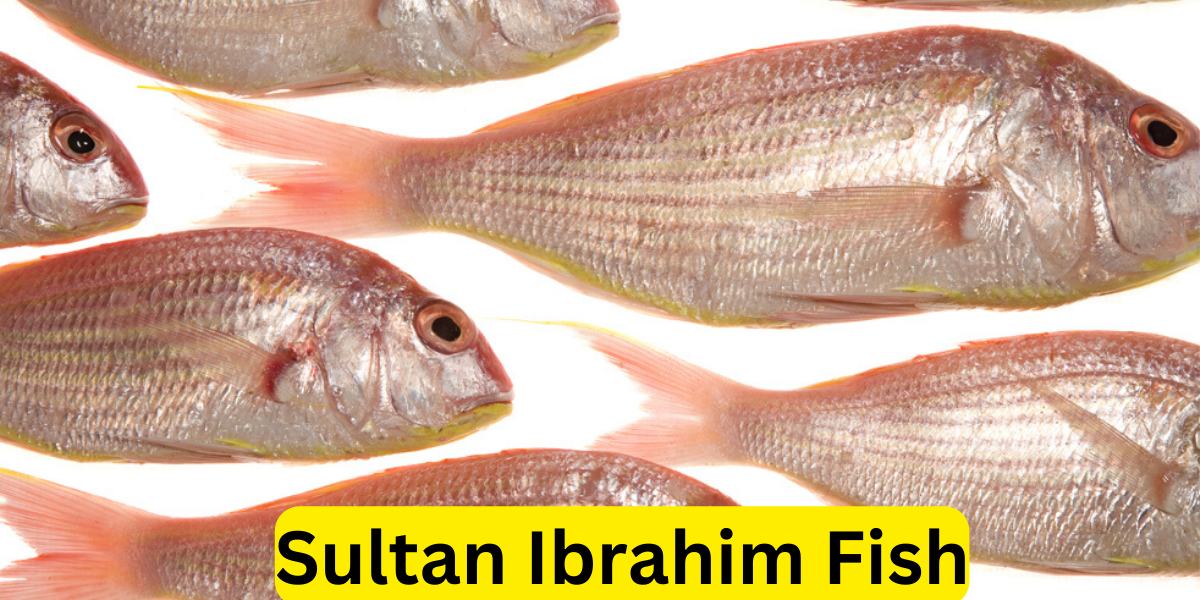The underwater world is filled with an astonishing variety of marine life, each with its unique characteristics and beauty. Among the many enchanting creatures that inhabit the oceans, the Sultan Ibrahim fish stands out with its vibrant colors and graceful movements. In this article, we will explore the fascinating world of the Sultan Ibrahim fish, including its physical attributes, habitat, behavior, and significance to local communities.
Physical Attributes of the Sultan Ibrahim Fish
The Sultan Ibrahim fish, scientifically known as Acanthopagrus latus, is a species belonging to the family Sparidae. It is renowned for its striking appearance, characterized by an elongated body and a mouth equipped with sharp teeth. The fish displays a range of vibrant colors, including shades of pink, silver, and yellow. It often possesses a series of vertical dark stripes along its sides, adding to its allure.
On average, Sultan Ibrahim fish measure around 25 to 30 centimeters in length, with some individuals growing up to 40 centimeters. They have a relatively flat body, which aids in swift and agile movements in the water. The dorsal fin of the fish is composed of both spiny and soft rays, while the caudal fin is deeply forked, enabling precise navigation through the currents.
Habitat and Distribution
The Sultan Ibrahim fish is native to the Mediterranean Sea, making it a prominent species in the region. It thrives in coastal areas with sandy or rocky bottoms, often found near seagrass beds and reefs. The fish prefers temperate waters with a temperature range of 15 to 25 degrees Celsius, where it can find an abundance of food sources and suitable spawning grounds.
These colorful fish are commonly found along the coasts of countries such as Greece, Turkey, Italy, and Cyprus. They prefer areas with moderate water currents, allowing them to move effortlessly while foraging for food. Their adaptable nature allows them to inhabit both shallow coastal areas and deeper offshore waters, depending on the availability of resources.
Feeding Behavior and Diet
The Sultan Ibrahim fish is primarily carnivorous, feeding on a variety of marine organisms. Its diet includes small crustaceans, mollusks, worms, and smaller fish species. The sharp teeth enable the fish to seize and consume its prey with ease. They often employ an ambush strategy, lurking in crevices or seagrass beds, ready to pounce on unsuspecting prey that ventures too close.
During feeding, the Sultan Ibrahim fish exhibits remarkable agility and speed. It uses its streamlined body and powerful tail to dart through the water, swiftly pursuing its target. This predatory behavior ensures a balanced ecosystem by controlling the population of smaller marine organisms and contributing to the natural food chain.
Biya fish, also known as Asian sea bass or barramundi, is a species of fish that holds a special place in the culinary world. With its sleek silver body and distinctive pattern of scales, the Biya fish is not only a visual delight but also a treat for the taste buds. This versatile fish can be found in the coastal waters of Southeast Asia and is highly prized for its delicate flavor and firm, white flesh.
The Biya fish has gained popularity due to its ability to adapt to different cooking methods. Whether grilled, steamed, or pan-fried, this fish retains its natural flavor and remains moist and tender. Its mild, yet slightly sweet taste makes it a favorite among seafood enthusiasts, and it pairs well with a variety of seasonings and sauces.
Rich in nutrients, the Biya fish is a healthy choice for those seeking a balanced diet. It is an excellent source of high-quality protein, omega-3 fatty acids, and essential vitamins and minerals. These nutritional benefits contribute to overall well-being, promoting heart health, brain function, and reducing the risk of chronic diseases.
Hamour fish, also known as grouper, is a popular and delicious fish found in the Arabian Gulf region. This species is highly valued for its delicate flavor and firm, white flesh, making it a sought-after choice among seafood enthusiasts.
The hamour fish has a distinctive appearance, with a broad, flattened body and a large mouth, perfect for catching prey. Its coloration varies from dark brown to gray, blending seamlessly with its natural habitat of rocky reefs and coral formations. Renowned for its versatility, the hamour fish can be prepared in numerous ways, including grilling, baking, or frying, each method enhancing its unique taste.
The Hilsa fish, also known as Ilish or Pulasa, is a species of fish that holds a special place in the culinary and cultural traditions of South Asia. It is widely regarded as one of the most sought-after and prized fish varieties in the region. Hilsa fish is predominantly found in the rivers of Bangladesh, India, and Myanmar, with the Ganges and Brahmaputra rivers being its primary habitats.
What sets the Hilsa fish apart is its distinctive taste and flavor, making it a delicacy enjoyed by many seafood enthusiasts. Its flesh is tender, oily, and has a rich, distinct flavor that is truly unique. The fish is silver in color and has a slender, elongated body with sharp, pointed scales. It is highly valued for its soft texture and the way it melts in the mouth when cooked to perfection.
The Hilsa fish is not just known for its culinary excellence but also holds great cultural significance. In Bangladesh, it is considered the national fish and holds a prominent place in their cuisine and cultural celebrations. During the monsoon season, when the Hilsa fish migrates upstream to spawn, it becomes a major part of festivities and feasts.
Reproduction and Life Cycle
Sultan Ibrahim fish engage in a fascinating reproductive process that takes place during the warmer months. When the water temperature rises, signaling the onset of the breeding season, males develop vibrant colors and engage in territorial displays to attract females. These displays involve the males erecting their dorsal fins and performing intricate swimming patterns to capture the attention of potential mates.
Once the female selects a suitable male partner, they engage in spawning. The female releases her eggs while the male fertilizes them externally. This external fertilization method is common among many fish species. The fertilized eggs are then left to drift with the currents, ensuring their dispersion over a wide area.
The hatched larvae go through a series of developmental stages before maturing into adult fish. The early stages of their life cycle are crucial, as they face numerous challenges, including predation and environmental conditions. However, those that survive eventually grow into the vibrant and majestic Sultan Ibrahim fish.
Cultural and Economic Significance
The Sultan Ibrahim fish holds great cultural and economic significance in the coastal communities where it resides. In the Mediterranean region, it is highly valued as a delicacy and is often featured in local cuisine. Its tender meat and mild flavor make it a popular choice for seafood enthusiasts, with various traditional recipes celebrating its taste and texture.
Moreover, the fishing industry benefits from the presence of Sultan Ibrahim fish. Local fishermen rely on these fish for their livelihood, as they contribute to the economic growth of the coastal communities. The sustainable management of Sultan Ibrahim fish populations is vital to ensure their long-term availability and the preservation of both the environment and the fishing industry.
The Sultan Ibrahim fish is an enchanting species that captivates both marine enthusiasts and those with a penchant for culinary delights. Its vibrant colors, graceful movements, and significant role in the marine ecosystem make it a beloved inhabitant of the Mediterranean Sea. As we continue to appreciate and understand the wonders of the underwater world, let us strive to protect and preserve the Sultan Ibrahim fish and its fragile habitat for future generations to enjoy. Read More Post Visit.




